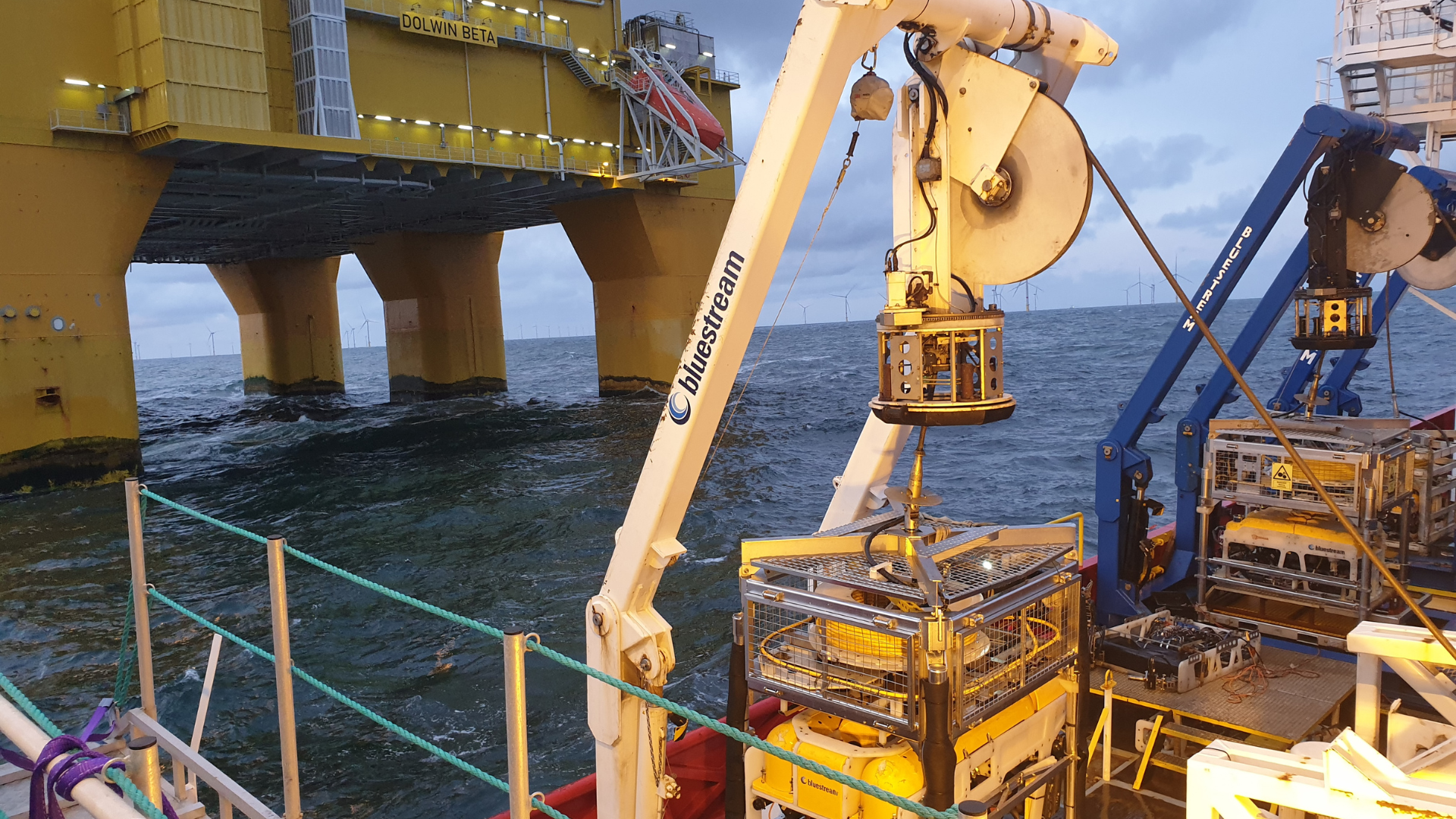Overview
The case study focuses on the comprehensive structural inspections conducted on various TenneT offshore platforms. The inspections were carried out using a DP2 Remotely Operated Vehicle Support Vessel (ROVSV) named VOS Sugar, equipped with three ROVs. The objective was to ensure the integrity and safety of the offshore platforms, addressing various aspects of structural health and performance.
Client
TenneT Offshore GmbH
Location
German North Sea
Workscope
General Visual Inspection
The initial phase of the inspection involved a general visual assessment of the offshore platforms. ROVs were deployed to visually inspect the overall condition, identifying any visible signs of damage, corrosion, or wear.
Close Visual Inspection
A close visual inspection was conducted to provide detailed scrutiny of critical components and structural elements. This step aimed to identify any anomalies, cracks, or surface defects that may not be apparent during the general visual inspection.
Marine Growth Inspection
Marine growth on the structures can impact their structural integrity and performance. The ROVs were equipped with specialized tools and cameras to assess the extent of marine growth, ensuring that it did not compromise the platform's functionality.
Scour Protection Measurements
Utilizing Blueview technology, the inspection team measured scour protection effectiveness and assessed potential scour depths around the platform structures. This information is crucial for understanding the impact of seabed erosion on the platforms' stability.
Cathodic Protection Readings
Cathodic protection is essential to prevent corrosion on metal structures submerged in seawater. The ROVs were equipped with sensors to measure the effectiveness of the cathodic protection systems, ensuring that the platforms were adequately shielded against corrosion.
Anode Consumption Readings using 3D Photogrammetry
The 3D photogrammetry technology was employed to measure anode consumption. This provided a detailed analysis of how sacrificial anodes were depleting over time, allowing for proactive maintenance planning to replace or replenish anodes as needed.
Wall Thickness Inspections
The structural integrity of the offshore platforms was further evaluated through wall thickness inspections. The ROVs used specialized equipment to measure the thickness of structural components, identifying any areas where thinning might have occurred due to corrosion or other factors.
Dimensional Inspections
The dimensional inspections involved assessing the precise dimensions of critical structural elements to ensure compliance with design specifications. Any deviations could indicate potential structural issues that require attention.
Solution
The comprehensive inspections provided valuable data on the structural health of the TenneT offshore platforms. The information gathered from visual inspections, marine growth assessments, scour protection measurements, cathodic protection readings, anode consumption readings, wall thickness inspections, and dimensional inspections formed the basis for maintenance planning and ensuring the continued safe and reliable operation of the offshore platforms. The proactive approach to structural integrity management helps TenneT maintain a high standard of safety and environmental responsibility in their offshore operations.


